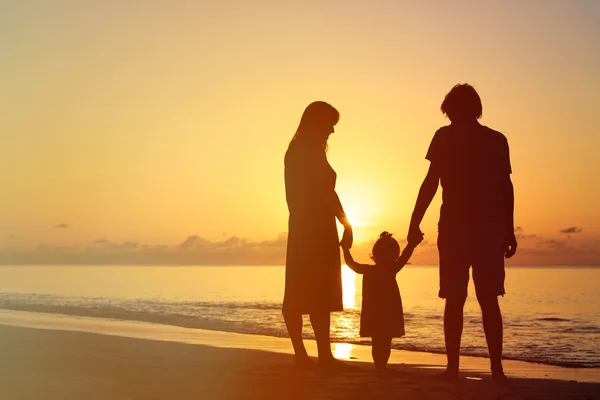BY ADEBAYO ADEKOLA
In June 2025, the International Labour Organisation (ILO) marked the 25th anniversary of the adoption of the Maternity Protection Convention, 2000 (No. 183) and presented an ILO Care Economy brief, (Brief Nr.1), “Closing the gender gap in paid parental leaves – Better parental leaves for a more caring world of work”, reviewing the current state of paid parental leave policies (maternity, paternity and parental leaves) worldwide and the related gender gap. It also provides guidance on how countries can promote equality and fairness by investing in more gender-responsive paid parental leave.
This convention provides guidelines in article 2 for maternity protection, health protection in article 3, maternity leave in articles 4 and 5, benefits in article 6, and employment protection in articles 8 to 10. Nigeria is not a signatory to the International Labour Organisation’s Maternity Protection Convention, 2000 (No. 183). However, as a member state of the ILO, Nigeria remains bound by the organisation’s standards. It is obligated to adhere to the general principles of the ILO as a member state. Therefore, ILO standards influence Nigeria’s existing labour laws and practices related to maternity leave, even though they may not fully align with Convention 183.
Hence, a careful review of the key points from the ILO Care Economy brief could guide employers and employees in Nigeria on how to promote equality, fairness, and decent work through gender responsive paid parental leaves, equality of opportunity, and equitable treatment between men and women in the world of work in Nigeria.
Advertisement
Paid Parental Leave
Men and women are entitled to paid parental leave. As mandated in ILO Convention No. 183, maternity leave refers to the prenatal, childbirth, and postnatal periods that allow mothers to rest, heal, recover, breastfeed, and take care of a newborn child. The total maternity leave should not be less than 14 weeks and include a compulsory leave period of six weeks after childbirth. The amount of cash benefits should not be less than two-thirds of the woman’s previous earnings. Parental leave available to mothers is the employment-protected leave that is often (but not always) provided in addition to maternity and paternity leave to allow parents to care for an infant or young child once maternity and paternity leave have ended. The paid parental leave period available to mothers excludes any length of paid parental leave that is for exclusive use by the father as a non-transferable right. It attributes to mothers all the parental leave that is not reserved for fathers.
The total duration of paid parental leave reserved for fathers considers the duration of both paid paternity leave and paid parental leave earmarked to fathers. Paternity leave is employment-protected leave granted to the father to be used at or around the time of childbirth or adoption. Parental leave reserved for fathers is employment-protected leave that is often (but not always) provided in addition to maternity and paternity leave to allow parents to care for an infant or young child once maternity and paternity leave have ended. The duration of the leave reserved for fathers includes only the portion that is individually allocated to them as a non-transferable right.
Advertisement
The Gender Gap
The gender gap in paid parental leave entitlements is calculated by measuring the difference (in weeks) between the total duration of paid parental leave available to mothers (paid maternity plus parental leave). and the total duration of paid parental leave reserved for fathers (paid paternity plus paid parental leave). Globally, the average length of the gender gap in paid parental leave was 22.5 weeks or 5.2 months in 2024. This means that, on average, mothers are entitled to five more months of paid leave than fathers following the birth or adoption of a child. Globally, paid paternity leave is significantly shorter than maternity leave, on average,16 weeks shorter. In fact, across the 186 countries for which the ILO has data, the average duration of paid paternity leave remains low – just four days (0.6 weeks) – with an average of nearly ten days among the 105 countries with statutory paid paternity leave.
According to the brief, in 2024, 121 out of 186 countries with data in the ILO Care Policy Portal offered a right to paternity leave, with 37 countries introducing paternity leave entitlements in the preceding ten years. In addition, 31 countries introduced parental leave provisions or increased the duration of parental leave in the same period. In Nigeria, there is no statutory provision for paternity leave in the Labour Act, meaning it is not a mandatory benefit for all male employees. However, the Federal Government has approved a 14-day paternity leave for male civil servants, and some state governments like Lagos and Enugu have also implemented similar provisions for their public sectors. Private sector employers may also offer paternity leave at their discretion, but it’s not a legal requirement
Reducing the Gender Gap in Paid Parental Leave
Advertisement
Amongst many benefits, paid parental leave is crucial in challenging social norms and reducing gender inequalities at home, in the workplace, and in society overall. (Brief Nr. 1). Policies and measures that other countries are taking to improve parental leave and recognise the right to care for both men and women can be adopted in reducing the gender gaps in paid parental leave in Nigeria, taking into consideration the peculiarities of Nigeria’s social, cultural, economic, and labour practices. These measures include:
●As confirmed by the ILO Standard Review Mechanism Tripartite Working group (SRM TWG), the most up-to-date international labour standards on maternity protection are the Maternity Protection Convention (No. 183) and Recommendation (No. 191), 2000 (ILO 2023b). Nigeria should modify its laws to align with up-to-date international labour standards on maternity provisions to guarantee adequate maternity protection to all employed women in Nigeria.
● Nigeria should implement compulsory non-transferable paternity leave in both private and public sectors, increase the availability, duration, and adequacy of paid paternity leave to promote the use of leaves by fathers, and a cultural shift toward greater paternal involvement.
●Nigeria should promote parental leave entitlements for fathers as a family entitlement, but with individualised entitlements, non-transferable leave reserved for fathers (“use it or lose it”) or bonus systems that extend leave when both parents participate as measures to encourage fathers to use parental leave. Such a bonus system exists in Canada, Germany, Italy and Japan.
Advertisement
●Since parental leave is often long-term, Nigeria, through legislation, should offer flexible options, such as taking parental leave on a part-time basis or split leave over a certain period, to help parents balance work and care. Flexible options were observed to support continued labour force participation during intensive childcare periods, and ease operational pressures on employers by avoiding extended absences.
●Nigeria should consider financing paid parental leave for all parents through social protection and based on effective social dialogue between the employer, employee and labour unions, in line with the ILO Resolution concerning decent work and the care economy (2024) and international labour standards and social dialogue (ILO 2024a).
Advertisement
CONCLUSION
Expanding leave entitlements for fathers around the birth or adoption of a child in all sectors (Private and Public) in Nigeria would be a very important step and significant development towards the achievement of gender equality at work in Nigeria.
Advertisement
Adebayo Adekola, counsel/executive assistant, Wole Olanipekun & Co, can be contacted via https://www.linkedin.com/in/bsadekola/ and +2348165299774
Advertisement
Views expressed by contributors are strictly personal and not of TheCable.








